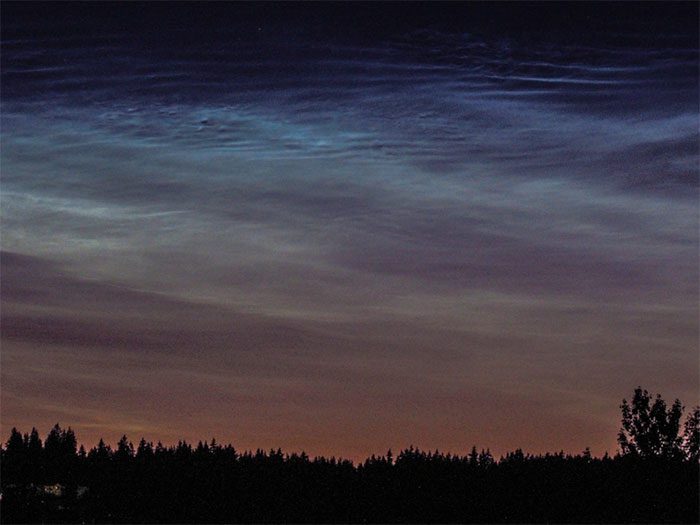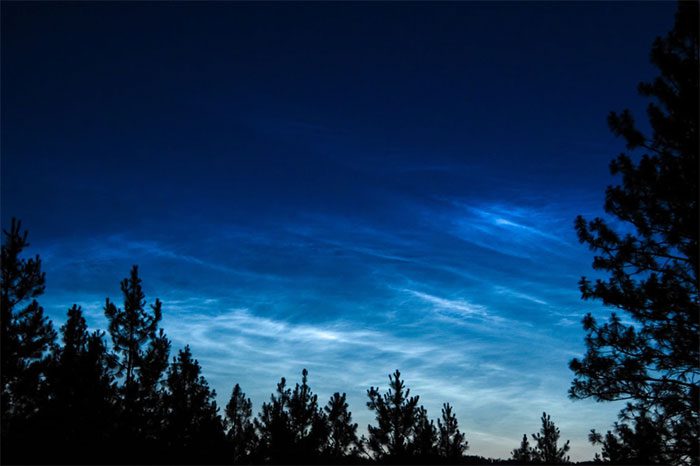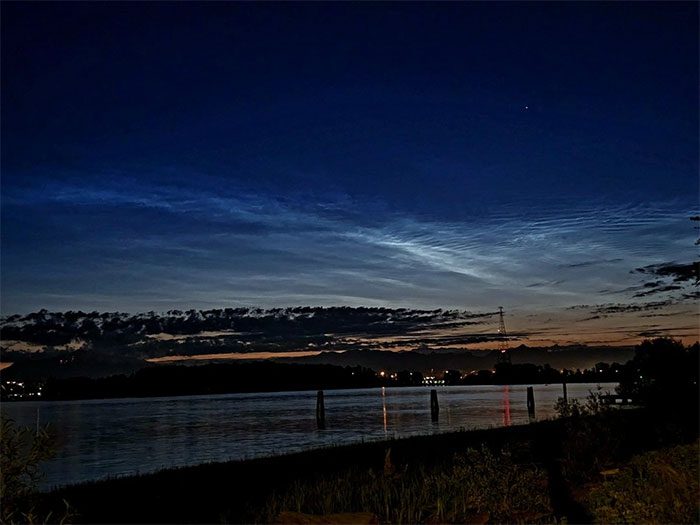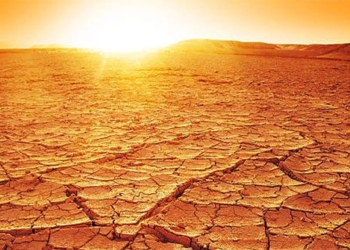Recently, sky watchers in the United States, the United Kingdom, and Canada have discovered strange noctilucent clouds. So far, their origin remains a mystery to humankind.
Last week, observers in North America and several European countries spotted a series of shimmering streaks in the night sky. These silvery-blue streaks only shine brightly after the sun has dipped below the horizon, according to the Washington Post.
These clouds captivate viewers with their stunning yet somewhat peculiar appearance.
These are not ordinary clouds. Researchers state that these noctilucent clouds, which glow at night, are the rarest, driest, and highest clouds on Earth.
Noctilucent clouds typically appear in late spring and can be seen on many summer evenings. However, satellite data indicates that the frequency of noctilucent clouds this year is significantly higher than it was 15 years ago.

Noctilucent clouds over Seattle. (Photo: Twitter/@NWSSeattle).
Mesmerizing Beauty
“People in the northern parts of North America and Canada can definitely see noctilucent clouds this weekend. We are nearing the peak of noctilucent cloud season. Even without unusual events, they can still appear in the north,” said Cora Randall, a professor at the University of Colorado Boulder.
The clouds usually appear near the poles, but they sometimes show up at lower latitudes. Rare sightings have been reported from states like Oregon and Washington, as well as countries such as Canada, the UK, and Denmark in recent days.
To see noctilucent clouds, observers need to look towards the horizon and gaze northward.
“There is nothing quite like these noctilucent clouds,” the National Weather Service in Seattle tweeted.

Noctilucent clouds in Keller, Washington. (Photo: Washington Post).
Noctilucent clouds are also known as polar mesospheric clouds. This type of cloud is believed to be composed of ice crystals in the mesosphere, at altitudes ranging from 75 to 85 kilometers. About 99.99% of the atmosphere lies below this layer.
They form when water vapor condenses around tiny dust particles suspended in the mesosphere and freezes, creating ice crystals.
Noctilucent clouds typically glow blue or bright white, appearing around sunset or sunrise. Unlike other clouds, they form at such high altitudes that they can continue to reflect light even after the sun has set below the horizon.
Causes of the Anomaly
“This cloud season has been quite unusual lately. The clouds began appearing as usual, but the frequency of their occurrence increased significantly last week,” Randall, a researcher for NASA’s Aeronomy of Ice in the Mesosphere (AIM) mission, stated.
She noted that the frequency of noctilucent clouds in recent days is much higher than what AIM has observed over the past 15 years.
Noctilucent clouds depend on two main components in the mesosphere: water vapor and temperature. Randall and her colleague Lynn Harvey reported that data from NASA’s Aura satellite shows that temperatures at the mesosphere boundary have risen in recent days.
However, the concentration of water vapor at this time of year is at a record high for the past 15 years of observation.
“The increase in temperature is not good for cloud formation, but the increase in water vapor is very favorable,” Randall said.
She explained that the rise in water vapor could be linked to rocket launches. Previously, researchers found that water vapor released from rockets can lead to the formation of noctilucent clouds.
“At least 16 rockets were launched in June. Any of those rockets could be responsible for the formation of these unusual clouds,” said Michael Stevens, a researcher at the U.S. Naval Research Laboratory.

Noctilucent clouds in Vancouver, Canada. (Photo: Twitter/@Stturner4669).
Stevens confirmed that two rocket launches from the U.S. on June 18 and 19 are the most likely candidates for the unusual cloud formation. It may take up to 10 days for the water vapor from the rockets to reach the latitude where clouds form. However, this is still a preliminary explanation and requires further analysis to confirm.
Atmospheric scientist Matthew Deland noted that the eruption from the underwater volcano Hunga Tonga on January 15 also injected a large amount of water vapor into the stratosphere. The volcano even spewed material up to nearly 60 kilometers high, reaching the mesosphere. The eruption set a world record for the highest volcanic column recorded by satellite.
However, Deland mentioned that it may take some time to see the effects of the eruption on the clouds.
He also pointed out that clouds appearing in lower latitude areas like Seattle are uncommon and difficult to persist in the long term. It depends on the flow of temperature or water vapor descending to lower latitude regions.
In rare occasions in recent years, noctilucent clouds have appeared in London, central California, and Oklahoma.
“They are truly remarkable. The clouds really shine in the dark sky,” Deland said.




















































